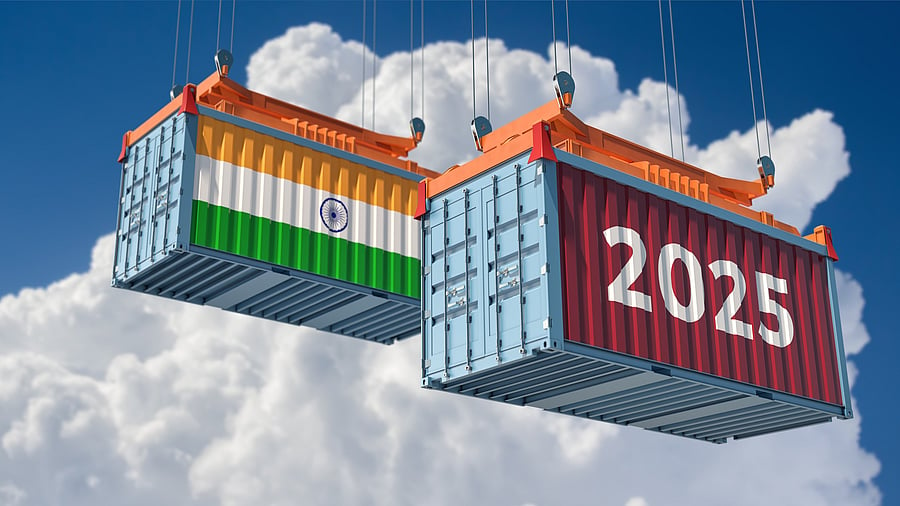
Image for representation.
Credit: iStock Photo
India’s logistics sector stands at the frontier of digital innovation, policy reform, and global trade integration. Over the last several years, the convergence of technology platforms, government strategy, and rising digital literacy has produced a logistics ecosystem that is both a source of economic opportunity and a signal of India’s ambition to become a developed nation by 2047.
India’s logistics costs have seen a remarkable decline, from around 14% of the GDP to 7.8-8.9% of the GDP in FY2022, a level much closer to international best practice. This improvement reflects not only physical infrastructure upgrades but also the spread of digital platforms that connect operators, drivers, exporters, and consumers in real time. It is a transformation visible far beyond the main metros. Cities such as Bhopal, Coimbatore, and Bhubaneswar are now integral nodes in digitally connected networks that move everything from manufactured goods to groceries at record speed.
Digital logistics platforms now operate through a spectrum of models. Asset-light aggregators and Goods Transport Agencies (GTAs) match thousands of independent drivers and small fleet owners to short-haul delivery demand; integrated companies manage the entire supply chain from warehouse to last mile; hyperlocal services and B2B specialists use app-based gig models for specialised needs.
These approaches share a foundation in GPS-based tracking, app workflows, transparent digital payments, and standardised service quality. For millions of self-employed workers, employees, and entrepreneurs, this has meant rising income, flexible work, and easier access to credit or insurance.
A major enabler is the Unified Logistics Interface Platform (ULIP), a government-backed digital layer linking more than 100 government and private sector systems. The ULIP uses secure APIs and unified data standards to allow cargo tracking, documentation, and compliance through a single window. By mid-2025, the ULIP had processed more than 100 million digital transactions. As a result, exporters and logistics operators now navigate customs and port processes with far less paperwork and delay. This model of data standardisation, already aligned with emerging frameworks such as UNCITRAL Model Laws and UNESCAP’s Cross-border Paperless Trade initiatives, lays the groundwork for India’s eventual participation in global digital trade ‘rails’.
India’s progress is part of a wider digital trade story. Over 98% of all trade transactions are now processed via the national single window, where e-certification for non-preferential trade is mandatory. These reforms are aligned with international best practices, ensuring that India’s logistics and trade systems are both domestically robust and globally interoperable.
For businesses, these developments are not abstract. The MSMEs and exporters now benefit from reliable, affordable logistics in both urban and semi-urban India. Domestic consumption is rising as same-day and next-day delivery become routine. International partners increasingly cite India’s digital logistics and trade readiness as a reason to shift sourcing and investment to India, particularly in a period of supply chain diversification beyond East Asia.
India’s 2023 World Bank Logistics Performance Index ranking, 38th globally, reflects these structural improvements. Container turnaround at major ports has fallen below 24 hours. Digital documentation and tracking mean fewer errors and better visibility for global buyers.
Challenges ahead
Despite significant advances, several challenges temper the sector’s momentum. Digital adoption among smaller logistics firms and independent operators remains uneven, especially outside urban centres. Many lack the capital, technical expertise, or reliable Internet access to participate in platform-driven supply chains fully. Data interoperability between various digital platforms is still evolving, and the absence of unified data standards can lead to fragmentation, duplication, and inefficiencies across the logistics ecosystem. Efforts such as India’s move toward DEPA-based frameworks are promising, but universal adoption will take time and sustained stakeholder co-operation.
Regulatory complexity adds another layer of difficulty. Overlapping state and Union regulations, inconsistent implementation of GST for logistics, and varied licensing norms create operational uncertainties for both digital startups and established companies. The process of harmonising these regulatory structures to support seamless, pan-India logistics is ongoing but incomplete.
Labour and workforce issues persist. While digital platforms have enabled greater self-employment and income generation, earnings security and social protection remain patchy, especially for gig and contract workers. Full realisation of the social security code’s intent depends on effective rollout and enforcement at the state level.
Finally, as digital logistics platforms increasingly handle sensitive commercial and personal data, the sector faces growing risks around cybersecurity and data privacy. Building resilient, secure, and transparent data governance frameworks is essential for trust and the long-term success of India’s logistics ambitions.
The direction of change is unmistakable. Digital logistics platforms, unified data standards, and institutional reform are turning logistics from a legacy cost into a national asset. As digital and regulatory harmonisation advance, India is positioned to shape, and not just follow, the new global trade architecture. The positive loop between internal improvement and global confidence is evident: better logistics attract investment, investment strengthens platforms, and strong platforms open new markets.
India’s logistics transformation is happening in city streets, rural hubs, and digital dashboards. As global value chains seek partners that are reliable, digital-first, and future-ready, India’s logistics sector stands ready to deliver.
(Arpita Mukherjee is Professor at Indian Council for Research on International Economic Relations (ICRIER).)
Disclaimer: The views expressed above are the author's own. They do not necessarily reflect the views of DH.